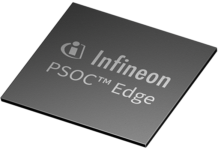- Journey during COVID-19 and how the post pandemic world will look like with IoT, and the opportunities & challenges involved
- Impact on businesses and positioning for future growth opportunities, and the new revenue streams
- IoT adoption in healthcare during the COVID-19 crisis, and organisations deploying smart IoT solutions for workplace safety
- Cybersecurity challenges in the IoT era, and whether IoT can create pandemic-ready Smart Cities
New Delhi, 24rd July 2020: Exhibitions India Group and IoT India expo hosted live technical discussions on ‘IoT Tech for Post-COVID Connected World.’ 280+ people attended the webinar in the ongoing series with renowned panellists delivering great insight for viewers.
Moderator Mr. Sunil David, Regional Director – IoT, India and ASEAN AT&T Global Network spearheaded the discussions, focussing on the various trends involving adoption of IoT during COVID-19, and the way forward out of the pandemic for the sector. “Trends have shown an upwards surge in adoption of consumer IoT such as smart fridges, smart TVs as people stay home for prolonged hours. The increase in purchase of smart personal devices such as grooming products is an outcome of the pandemic. Many industries that were not heavy on IoT usage today are widely implementing the technology as a direct result.”
Some important takeaways from the esteemed panel:
Dr. Aloknath De –Missionpreneur & CTO, Samsung R&D Institute “Healthcare, manufacturing and e-learning industries are speedily implementing IoT with lockdowns enforcing these changes. IoT adoption is fast and wide: with the Department of Telecommunication working towards inculcating concepts of smart devices and ultimately smart cities. The Open Connectivity Foundation is looking into creating smart homes and smart buildings. While there is not a lot of business around the latter concepts, there’s abundant focus currently on infrastructure building. The government is working on building interoperability between homes and cities, and 5G will work as a backhaul for this implementation.”
Dr. Rishi Bhatnagar – President, Aeris communication “We can divide the industry into 4 M’s to deliberate the effects of COVID-19 on the industry: 1) Materials- the pandemic sharply affected all supply chains; 2) Machines- In the IT world, machines are also a human resource, so while industries like manufacturing completely stalled, we were able to work remotely without any trouble as we are on the cloud; 3) Manpower- the priority today has shifted to health and safety, as opposed to going to work that was the norm in pre-COVID days; and 4) Methodology of work- whether it’s processes or operations within an organisation, everything has been impacted. The post-pandemic world will most likely see a lot more use cases of IoT across industries that had previously being shying away from adopting the tech.”
Mr. Arvind Tiwary – IoT Evangelist, Chair IoT Forum, TiE ”There are both positive and negative impacts of the pandemic, such as the lack of economic activities having driven certain kinds of pollution down, whilst indoor pollution and ozone levels have risen. We have learnt today that 40% of pollution can be attributed to 2-wheeler pollution and construction. COVID-19 has also impacted consumer behaviour, and it has proven that last-mile automation is indeed a very tough task, despite the presence of drones and other technologies. For the first time however, we have enough data to recalibrate learning and inspire further action. The world has together been shut down for the first time this way in 3,000 years, and it will be interesting to see what the long-terms impacts are.”
Mr. Rahul Bedi – Sr. Director, IoT, Intel Corporation “Some of the trends that were taking place pre COVID-19 have been accelerated over the last few months. My estimation is that 20-50% of the changes in consumer and organisational behaviour will stay, and the rest will go back to the old normal. Touchless tech will definitely lead the way, and the challenges in organisations around maintaining social distancing and mandating masks will have to be managed. For instance, facial recognition tech is not equipped to handle masks, so AI will have to meet its ethical limits on handling the issue. Automation across manufacturing has sped up, but a widespread adoption will eventually face the question of making human employment redundant. Today, areas of manufacturing such as quality control that had been reluctant to automate, are also using automation as a result of the current scenario.”
Ms. Bharti Maan – Sr. Director, Digital Transformation & Innovation Advisory, SAP “Organisations today have widely adopted IoT, and are working towards making it affordable. IoT has, in fact emerged as a tool for business connectivity; with use cases during COVID-19 across all sectors including to track consignments, ensure transport of raw materials, and even on the assembly lines. The transportation industry has accelerated its IoT usage as a result of the pandemic to ensure contactless operations. The government too is using IoT in healthcare. A very important aspect here is consumer IoT, such as smart refrigerators, smart dishwashers and smart TVs which have become even more important as people are forced to stay more and more at home. The adoption of IoT has become so widespread that the earlier bar of having 5 billion connected devices globally has already been raised to 50 billion connected devices.”
For more information, please visit: https://www.iotindiaexpo.com/















